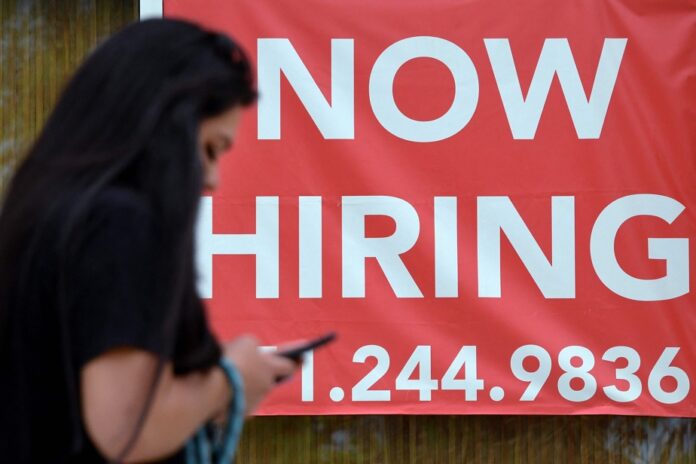(Washington) Private sector companies added 497,000 jobs in June, up sharply from previous months, also well above expectations, driven in particular by a sharp rise in the hospitality sector , according to the monthly ADP/Stanford Lab survey published on Thursday.
“The consumer services industry had a strong month of June, leading to a higher than expected level of job creation,” said Nella Richardson, chief economist at ADP, quoted in the press release.
Services accounted for 75% of job creations over the past month, particularly driven by the leisure and hotel sector.
Analysts for their part expected half as many, 245,000 jobs, according to the consensus of briefing.com.
On the other hand, wage growth continued to slow, rising by 6.4% in June, compared to 6.6% according to the corrected data for May, for those who remained in the same position, and 11.2% (0.9 percentage points). percentage less than the previous month) for those who changed jobs.
For the latter, this is the lowest increase since October 2021, the statement said.
“The data underscores that the economy continues to create jobs at a high rate, proof that the demand for labor remains strong. But a deceleration is to be expected, as the cumulative effects of monetary policy infuse the economy,” HFE chief economics officer Rubeela Farooqi said in a note.
Official employment figures for June in the United States, private and public sectors combined, will be published on Friday. The unemployment rate is expected to fall very slightly, to 3.6% against 3.7% in May, with fewer job creations nonetheless.
For more than two years, the labor market has remained very tight in the country, with employers facing a significant shortage of labor in different sectors.
Expected for many months, the signs showing a slowdown in hiring are still pending, while the American economy is starting to show signs of running out of steam, after a robust first quarter.
However, weekly jobless claims rose slightly at the end of June, according to figures released Thursday by the Labor Department, but still remain within the range observed in recent months.
The Fed, since March 2022, has been raising its key rates in order to curb high inflation. This leads banks to raise the cost of the loans they offer to households and businesses, with the consequence of easing the pressure on prices.
The last meeting, June 13-14, ended with a pause in rate hikes, still in the 5% to 5.25% range, and Federal Reserve Chairman Jerome Powell repeated since several times that the next decisions will be based on the available data.
The next meeting is scheduled for the end of the month, July 25-26.

